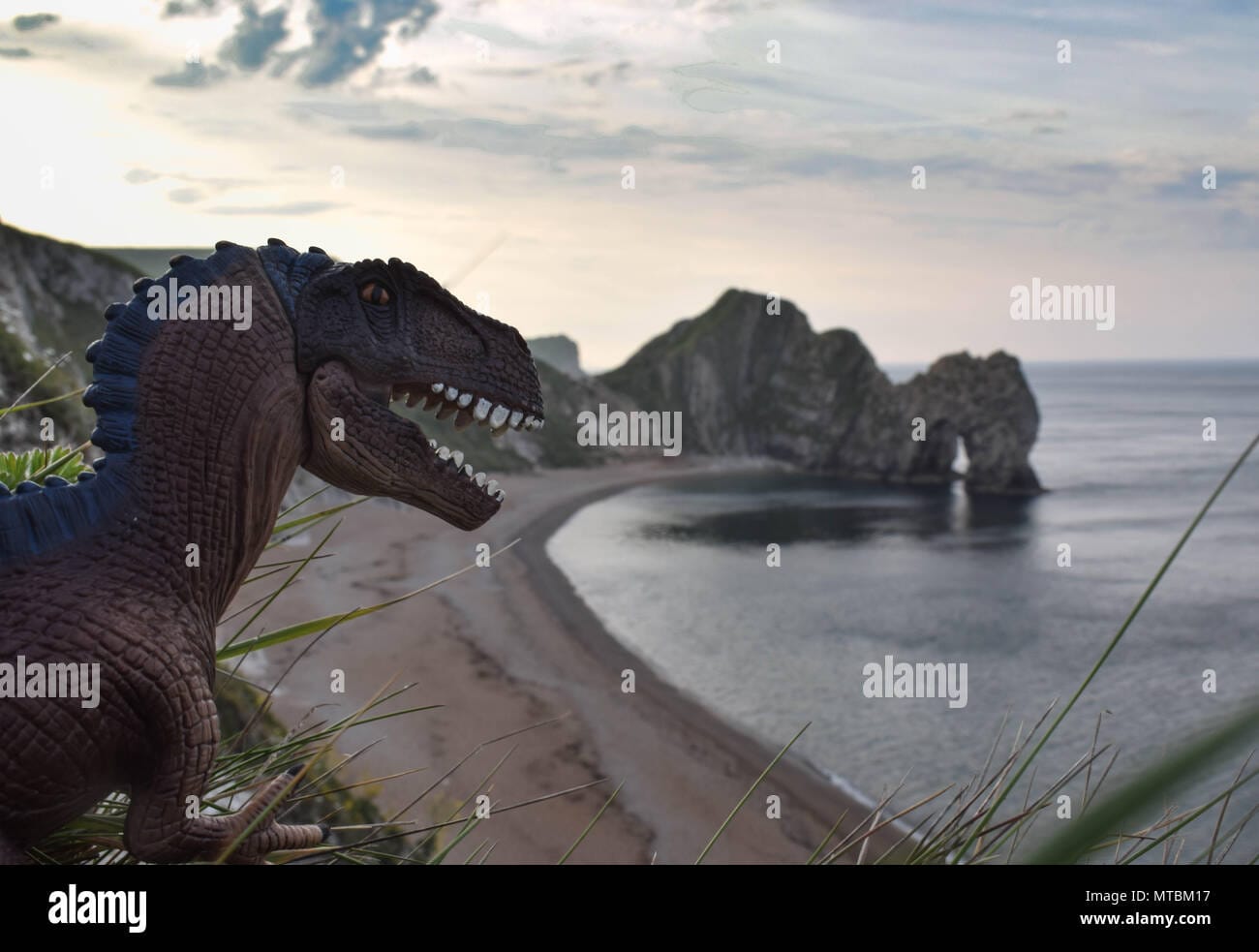The discovery of new dinosaur tracks along the UK’s famed dinosaur highway has generated considerable excitement within the paleontological community. This highway, which runs along the Jurassic Coast, is a UNESCO World Heritage site known for its rich fossil deposits and the preservation of ancient marine and terrestrial life. The latest findings not only add to the existing collection of dinosaur footprints but also offer a glimpse into the behavior and interactions of these ancient creatures.
The newly discovered tracks were uncovered during routine geological surveys conducted by a team of researchers from a local university. The team was investigating the sedimentary layers along the coast when they stumbled upon a series of well-preserved footprints embedded in the rock. These tracks are believed to date back to the Jurassic period, approximately 150 million years ago, a time when the area was a lush, subtropical environment teeming with diverse flora and fauna.
Among the newly identified tracks, researchers have found evidence of several different species of dinosaurs. Some of the footprints suggest the presence of large herbivorous dinosaurs, likely sauropods, which were known for their long necks and massive bodies. The size and shape of these footprints indicate that these dinosaurs were moving through the area in search of food, possibly grazing on the abundant vegetation that would have been present at the time.
In addition to the herbivorous tracks, the team also discovered smaller footprints that are believed to belong to theropods, a group of bipedal carnivorous dinosaurs. These tracks provide evidence of predatory behavior, suggesting that these creatures may have been hunting or scavenging in the vicinity. The presence of both herbivorous and carnivorous tracks in close proximity offers a unique opportunity to study the interactions between different dinosaur species and their roles within the ecosystem.
The significance of these findings extends beyond the individual tracks themselves. The location of the dinosaur highway, which stretches along the coast of southern England, is particularly important for understanding the geological history of the region. The sedimentary layers in which the footprints were found provide a record of the environmental conditions that existed during the Jurassic period. By analyzing these layers, researchers can gain insights into climate changes, sea-level fluctuations, and the types of habitats that were present at the time.
Moreover, the discovery of new tracks along the dinosaur highway has implications for conservation efforts. As paleontologists continue to uncover and study these ancient footprints, there is a growing recognition of the need to protect these sites from erosion and human activity. The Jurassic Coast is not only a site of scientific interest but also a popular tourist destination. Balancing the needs of tourism with the preservation of these valuable paleontological resources is a challenge that local authorities and conservationists must navigate.
The excitement surrounding the new tracks has also sparked interest in public engagement and education. Local museums and educational institutions are working to develop programs that will help the public understand the significance of these discoveries. By showcasing the newly found footprints and providing context about the dinosaurs that once roamed the area, educators aim to inspire a new generation of paleontologists and foster a greater appreciation for the natural history of the region.
As research continues, scientists hope to learn more about the specific species represented by the new tracks and the ecological dynamics of the time. Detailed analysis of the footprints, including measurements and comparisons with existing fossil records, will help to refine our understanding of dinosaur behavior, locomotion, and social interactions. This research may also lead to new discoveries about the evolutionary relationships between different dinosaur species.
In conclusion, the recent discovery of new tracks along the UK’s dinosaur highway marks an important milestone in the study of paleontology. These findings not only enrich our understanding of the dinosaurs that once inhabited the region but also highlight the importance of preserving these ancient sites for future research and education. As scientists continue to explore the rich geological history of the Jurassic Coast, it is likely that more discoveries will emerge, further illuminating the lives of these fascinating prehistoric creatures.


